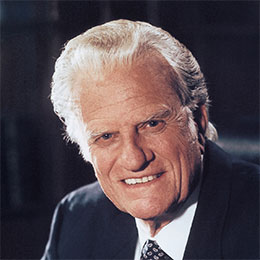Health
/ArcaMax
C-Force: How Seasonality Effects Sleep
To say it's cold outside is a relative statement. It depends on where you live and how one defines "cold." As America is the fourth-largest geographic country in the world, temperatures here can run the gambit from tropical to polar, with lots of varying conditions in between. The thing we all share is that winter is now upon us. But to be clear...Read more
C-Force: Fighting the Bliss Point Formula
Back in 2013, Pulitzer Prize-winning investigative reporter Michael Moss released a book that was destined to become a bestseller. Some would proclaim it to be one of the best books of the year. In the provocatively titled "Salt Sugar Fat: How the Food Giants Hooked Us," Moss enlightens readers with some troubling and shocking facts about ...Read more
C-Force: The Power of Walking, Talking and Positive Thinking
Say you happen upon an older individual walking along at a brisk pace. It's midday and they are wearing just regular street clothes, nothing that would be considered exercise wear. But they are walking in a way that says exercising is exactly what they are doing. You notice them because they are talking out loud as they walk, engaged in an ...Read more
C-Force: Saving Recipe Needed to Solve America's Food Safety Issues
At this point, it should surprise no one that many of the foods Americans eat nowadays are ultra-processed and spiked with chemical ingredients designed to enhance their flavor, texture, color, shelf life and addictive appeal. They make up what Amy Bentley, a food historian and professor at New York University, calls "the industrial palate." As ...Read more
C-Force: Some Cold Remedies Now Taking Heat
If you read my offering from last week, then you know I was addressing the fact that, despite modern medicine's many breakthrough cures and treatments, there remains no cure for the common cold. While a cure continues to allude us, there is no shortage of proposed treatments. According to a Statista report, "in 2024, the revenue in the Cold & ...Read more
C-Force: The Common Cold Comes Without a Cure
Over the last century or so, we have been able to develop countless breakthrough medical treatments, many proving to be lifesaving. Thankfully, this pattern of medical advancement continues as a major part of modern medicine. But my question is: Why haven't we found a cure for the common cold? While lots of folks have adopted cold remedies that ...Read more
C-Force: The Stakes Are Raised as Gambling Grows
As a sports fan, I have felt for some time now the inescapable and escalating presence of slickly presented pathways to placing a wager or two, or more, on a sports outcome. It's become a relatively new and accepted form for nationally advertised opportunities beckoning folks to place a wager at their convenience, virtually any time, day or ...Read more
C-Force: Never Too Soon to Improve Your Life
It is a time-honored tradition that with the arrival of another year folks make resolutions and set goals for themselves. According to a Pew Research Center survey from January, "Three-in-ten Americans report making at least one resolution this year, with half of this group making more than one." But, as we know, sticking with them can prove to ...Read more
C-Force: Storms Have Passed, But Health Consequences Remain
According to USA Today, for the doctors and staff of Asheville North Carolina's Mission Hospital, the only designated trauma center in the western part of the state, "it's been a colossal undertaking to get clean water" since Hurricane Helene.
"Hospitals like Mission need potable water for staff to sanitize equipment, clean wounds and simply ...Read more
C-Force: The Sleep-Wake Cycle Running Off the Rails
You say you're desperate to enjoy a better night's sleep? Know that a lot of folks are right there with you. According to a recent survey by the Sleep Foundation, "more than a third of U.S. adults slept worse in 2023" than they did in previous years, even though people are spending lots of money trying to achieve more satisfying shuteye, spurred...Read more
C-Force: How Health Risks Affect Our Healers
In America, we place a great deal of weight on the concept of care. As is the case in other developed countries, it's a word that gets thrown about a lot, especially in the context of health care or the idea of being a caregiver. But what of the concept of self-care? "Self-care isn't an indulgence -- it's essential," Palena Neale of the Harvard ...Read more
The Overlooked Importance of Living Color
The world we live in is filled with so many colors. Yet have you ever stopped for a moment to consider how just the experience of being exposed to these colors may be subconsciously impacting your mood, perception and maybe even your diet? There is now a field of scientific study called color psychology dedicated to exploring just how the ...Read more






















